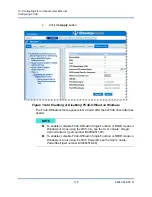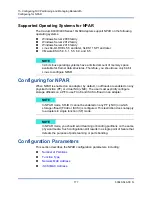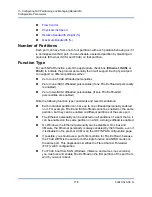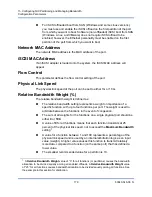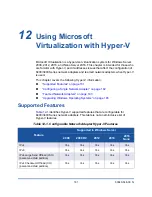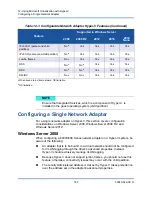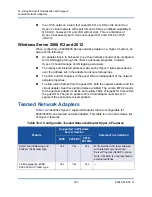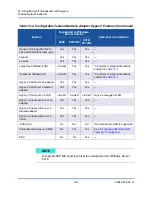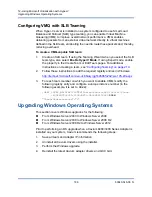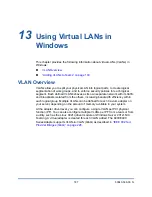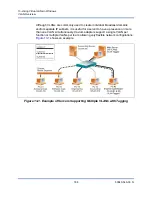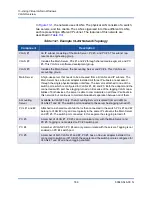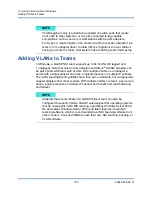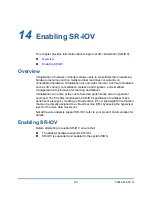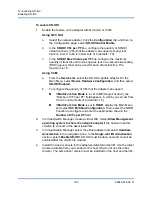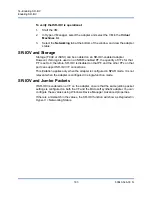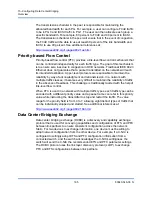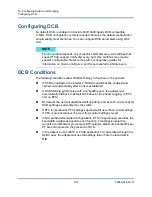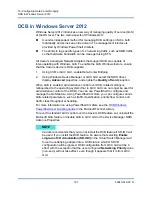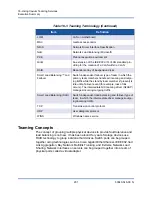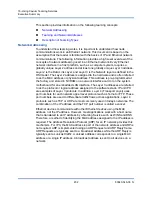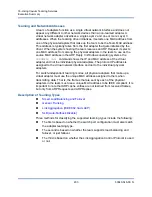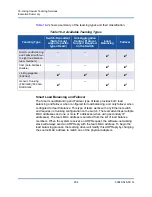
13–Using Virtual LANs in Windows
VLAN Overview
189
83840-546-00 N
, the network uses VLANs. The physical LAN consists of a switch,
two servers, and five clients. The LAN is organized into three different VLANs,
each representing a different IP subnet. The features of this network are
described in
.
Table 13-1. Example VLAN Network Topology
Component
Description
VLAN #1
An IP subnet consisting of the Main Server, PC #3, and PC #5. This subnet rep-
resents an engineering group.
VLAN #2
Includes the Main Server, PCs #1 and #2 through shared media segment, and PC
#5. This VLAN is a software development group.
VLAN #3
Includes the Main Server, the Accounting Server and PC #4. This VLAN is an
accounting group.
Main Server
A high-use server that needs to be accessed from all VLANs and IP subnets. The
Main Server has a Cavium adapter installed. All three IP subnets are accessed
through the single physical adapter interface. The server is attached to one of the
switch ports, which is configured for VLANs #1, #2, and #3. Both the adapter and the
connected switch port have tagging turned on. Because of the tagging VLAN capa-
bilities of both devices, the server is able to communicate on all three IP subnets in
this network, but continues to maintain broadcast separation between all of them.
Accounting
Server
Available to VLAN #3 only. The Accounting Server is isolated from all traffic on
VLANs #1 and #2. The switch port connected to the server has tagging turned off.
PCs #1 and #2
Attached to a shared media hub that is then connected to the switch. PCs #1 and #2
belong to VLAN #2 only, and are logically in the same IP subnet as the Main Server
and PC #5. The switch port connected to this segment has tagging turned off.
PC #3
A member of VLAN #1, PC #3 can communicate only with the Main Server and
PC #5. Tagging is not enabled on PC #3 switch port.
PC #4
A member of VLAN #3, PC #4 can only communicate with the servers. Tagging is not
enabled on PC #4 switch port.
PC #5
A member of both VLANs #1 and #2, PC #5 has an Cavium adapter installed. It is
connected to switch port #10. Both the adapter and the switch port are configured for
VLANs #1 and #2 and have tagging enabled.

